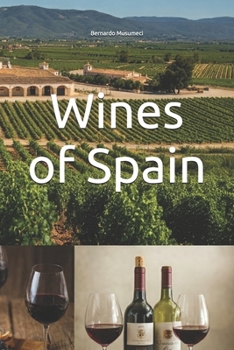Wines of Spain
Introduction
Brief history of Spanish winemaking: from the Phoenicians to the present, highlighting the importance of wine in Spanish culture and economy.Importance of Spain on the world wine scene: position among the largest producers and its influence on global wine production.The Influence of Climate on the Characteristics of Spanish Wines
Mediterranean climate: hot and dry summers, mild winters and maritime influence, and its influence on the vine's vegetative cycle and grape maturation.The importance of solar radiation: it influences the concentration of sugar and aromas in grapes.Spanish Grapes: A National Treasure
Tempranillo: the most cultivated red grape, its unique characteristics and potential to produce robust and elegant red wines.Garnacha: versatility and adaptation to different climates, production of red, ros and white wines.Other relevant varieties: Albari o, Godello, Verdejo, Monastrell, their characteristics and importance in Spanish productionThe Spanish Wine Regions: Diversity and Uniqueness
Rioja: the most famous region, with red wines aged in oak barrels.Ribera del Duero: concentrated and robust red wines, based on the Tempranillo grape.Ribera del Pened s: production of sparkling wines, still wines and cava.Priorato: concentrated and complex red wines, with terraced vineyards.The Different Winemaking Techniques Used in Spain
Traditional winemaking: classic methods of pressing, fermentation and aging.Modern winemaking: use of innovative technologies, such as fermentation in stainless steel tanks and temperature control.The Importance of History and Culture in Spanish Wine Production
The history of Spanish winemaking: from the Phoenicians to the present, highlighting the main milestones and influences.The importance of traditions: terraced vineyards, artisanal winemaking and wine culture in the lives of Spaniards.The Main Associations and Institutions of the Spanish Wine Sector
Advice Regulator: bodies responsible for controlling and guaranteeing the quality of wines from each designation of origin.Plataforma Espa ola del Vino: association that brings together the main players in the Spanish wine sector.The Spanish Wine Market in Brazil and the World
The image of Spanish wines on the international market: challenges and opportunities.The Brazilian market: consumption of Spanish wines, consumer preferences and growth potential.The Classification of Spanish Wines
Name of Origin (DO): wines with a defined geographical origin and specific characteristics.Protected Geographical Indication (PGI): wines with a broader geographic origin and less restricted characteristics.Wine Styles and Sweetness
Red wines: profile, pairing with cuisine and aging potential.White wines: profile, pairing with cuisine and aging potential.Ros wines: profile, consumption occasions and pairing.Sweet wines: production, styles and pairing with specific dishes.Pairing Spanish Wines
Tempranillo: pairing with red meats, cured cheeses and traditional Spanish dishes.Albari o: pairing with seafood, fish and light dishes.The Future of Spanish Wines
New trends and challenges: the search for more expressive and complex wines, sustainability and wine tourism.The role of new generations of producers.Conclusion
Spain as a producer of high quality and diverse wines.Format:Paperback
Language:English
ISBN:B0DM2GPJSR
ISBN13:9798345567050
Release Date:November 2024
Publisher:Independently Published
Length:96 Pages
Weight:0.31 lbs.
Dimensions:0.2" x 6.0" x 9.0"
Customer Reviews
0 rating





